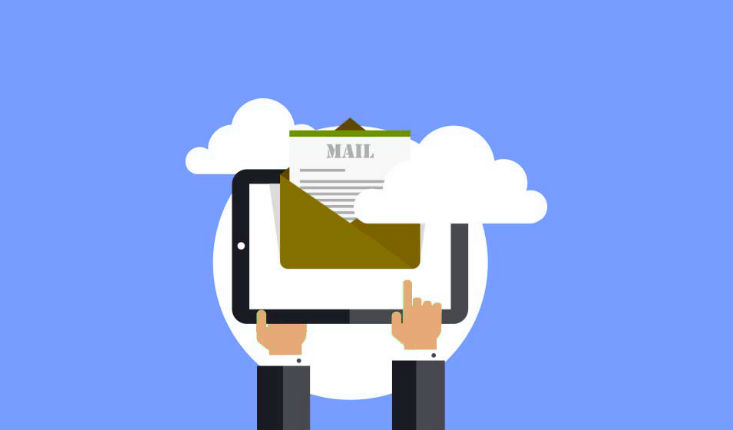Learn The Basics Of SMTP Email: What SMTP Is
Understand why SMTP Email is a protocol widely used for communication between servers.
What Is SMTP?
To understand SMTP Email, it is first necessary to know what SMTP stands for. SMTP or Simple Mail Transfer Protocol is the protocol or system of sending emails online. SMTP is a set of commands that ensure that your email client-server sends the message to the right server and that the receiving server, in turn, uses SMTP to ensure accurate delivery of the message to the end recipient. In other words, SMTP is a connection-oriented, text-based protocol which enables a mail sender to communicate with a receiver using command strings and supplying necessary data. It is done over a trustworthy ordered data stream channel, mostly a Transmission Control Protocol (TCP) connection.
Table of Contents

What Is Meant By SMTP Email?
Emails sent via the Simple Mail Transfer Protocol are called SMTP Email. It facilitates the reliable delivery of email messages as it not only does it connect to the server of the recipient and establish communication, it also returns the message to the sender in case the message isn’t delivered to the receiver because of some communication gap between the involved outbound SMTP servers.
Understanding The Components Of SMTP Email
The working mechanism of Simple Mail Transfer Protocol or SMTP emails takes place in a sequence of commands. The SMTP server examples can be best understood when their step by step functioning is clear to us. Since SMTP is a technical term not familiar to the masses, a step-wise description of the work functioning helps to formulate an idea of what makes SMTP a reliable option for your personal or professional pursuits.
The working chain:
SMTP Client: The first commands are sent from the SMTP client (a term used for the one who initiates the communication, that is, the sender or transmitter).
SMTP Server: The next series of commands come from the corresponding party or the SMTP server (a term used for the one who acts as the listening agent or receiver).
Transactions: This exchange of commands completes the session, and such an SMTP session can include zero or more SMTP transactions – it varies depending upon the type of communication.
Components Of An SMTP Transaction
After having known the working chain of SMTP email, let us now look at the elements that make SMTP transactions convenient and adaptable. SMTP comprises of three commands or reply sequences:
- MAIL command: The Mail command is used to establish the return address or the return-path. This means that in case an email doesn’t successfully reach its end recipient, it automatically returns to the initiator or sender. In other words, the Mail command establishes a reverse path.
- RCPT command: The RCPT command is short for receipt command and establishes a recipient of the message. The command can be used for more than one recipient at one go, each time for the new recipient.
- DATA command: The DATA command is used to signal the beginning and content of the message text, the content of the message. It is different from the Mail and RCPT command as they form a part of the envelope, whereas the Data command is associated with the components contained within the envelope.
The DATA Command In Brief
The DATA command has two parts – the message header and the message body, both of which are separated by an empty line. It is a group of commands. The SMTP server replies twice here – first to the DATA command itself as notification of its availability to receive the text. Then the server responds after the end-of-data sequence either to accept or to reject the entire message.
What Is My SMTP Server?
Now with the concepts understood, one might wonder which SMTP port he/she is subscribed to or should subscribe to. Generally, the SMTP settings are set to a person’s local Internet Service Provider’s SMTP settings (i.e., “smtp.yourisp.com”) and for an incoming mail server (IMAP or POP3) is set to his/her email account’s server (i.e., hotmail.com), which might differ from the SMTP server. But in case the question of “What is my SMTP server?” rings a bell in your head, here’s what you can do to find the answer:
- Go to Internet Explorer.
- Click on “Tools”.
- Click on “Internet Options”.
- Click on “Programs”
- Note the email program you are using.
- Check the website of the email manufacturer.
- Locate the SMTP server by opening a DOS window (click on the “Start” button -> choose “Run” from the menu -> type “CMD” in the box -> click “OK”).
- Type either “ping.smtp.mysite.com” or “ping mail.mysite.com” on the DOS window.
- Wait for the server to respond to the request.
- Note the name of the server.
- Click on “Tools.”
- Click on “Accounts.”
- Click on “Mail.”
- Select the “Default” account.
- Choose “Properties” from the menu.
- Choose the “Server” tab.
- Choose “Outgoing Mail.” Here you will see the name of your SMTP server.
Should You Go For An SMTP Server – Free Or A Paid Service?
Choosing a good SMTP Email server is vital, but it becomes difficult to decide when you need to pay money to get access to a server. Those who are on a budget but want to use an SMTP server free of cost to make communication safer and sounder can use the free server options available in the market. While they may not be as sound as the paid ones, they certainly serve the purpose well. In most of the free SMTP server options, there is a pre set limit for the maximum number of emails that can be sent in a month; an organization may make a selection after drawing a comparative analysis and conclusion of all these options.
Two SMTP Example Models Used By Organizations
SMTP comes in two models, namely, the end-to-end method model and the store-and-forward method model. While the end-to-end method model is used for communications between different organizations, the store-and-forward method model is used for connections within an organization.
Choose The Right SMTP Server Example!
SMTP examples and SMTP server examples are all over the place, but choosing the right alternative among all the countless available options can make all the difference for your business communication and marketing campaigns.
Which SMTP Ports To Use For An Uninterrupted Service?
You might now be wondering which SMTP port is the most suitable for you or which port you are subscribed to. Here is a list of the commonly used ports that can prove beneficial to you:
Port 25: This is the oldest and the most widely used port. It acts as the default port that communicates email across the Internet using the SMTP.
Port 465: This port began to be used for SMTPS encryption and authentication “wrapper” over SMTP. Its purpose is to send emails securely using Secure Sockets Layer (SSL).
Port 587: This port can be used as a default SMTP port as all mail servers support it. When operated together with TLS encryption, Port 587 ensures that emails are securely submitted in line with IETF guidelines.
Port 2525: This port is accepted as a replacement for Port 587 by every ESP. Consumer ISPs and cloud hosting providers also support it.
Final Words
SMTP email is undoubtedly the harbinger of uninterrupted communication between people and businesses. Its advantages are many, and investing in an SMTP Server is sure to leave a person satisfied because it ensures that his/her business or organization doesn’t come out as unresponsive or passive to the potential clients. However, there are several SMTP service providers, and choosing the best one among them is the real deal. You always keep in mind that only when an SMTP email server promises to be effective, reliable, affordable, and secure can it be an adoptable option for you.
Join the thousands of organizations that use DuoCircle
Find out how affordable it is for your organization today and be pleasantly surprised.

